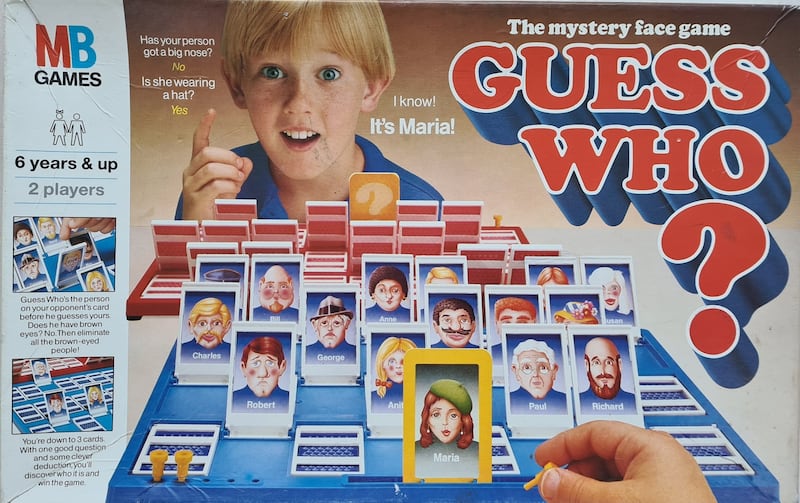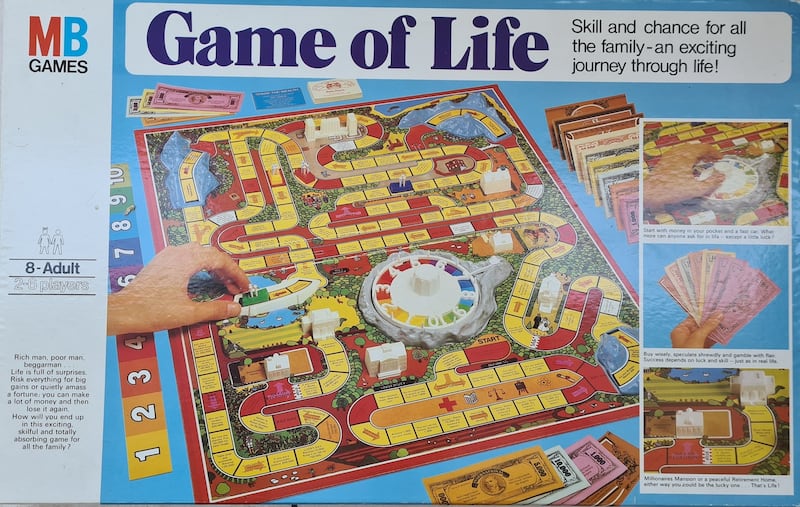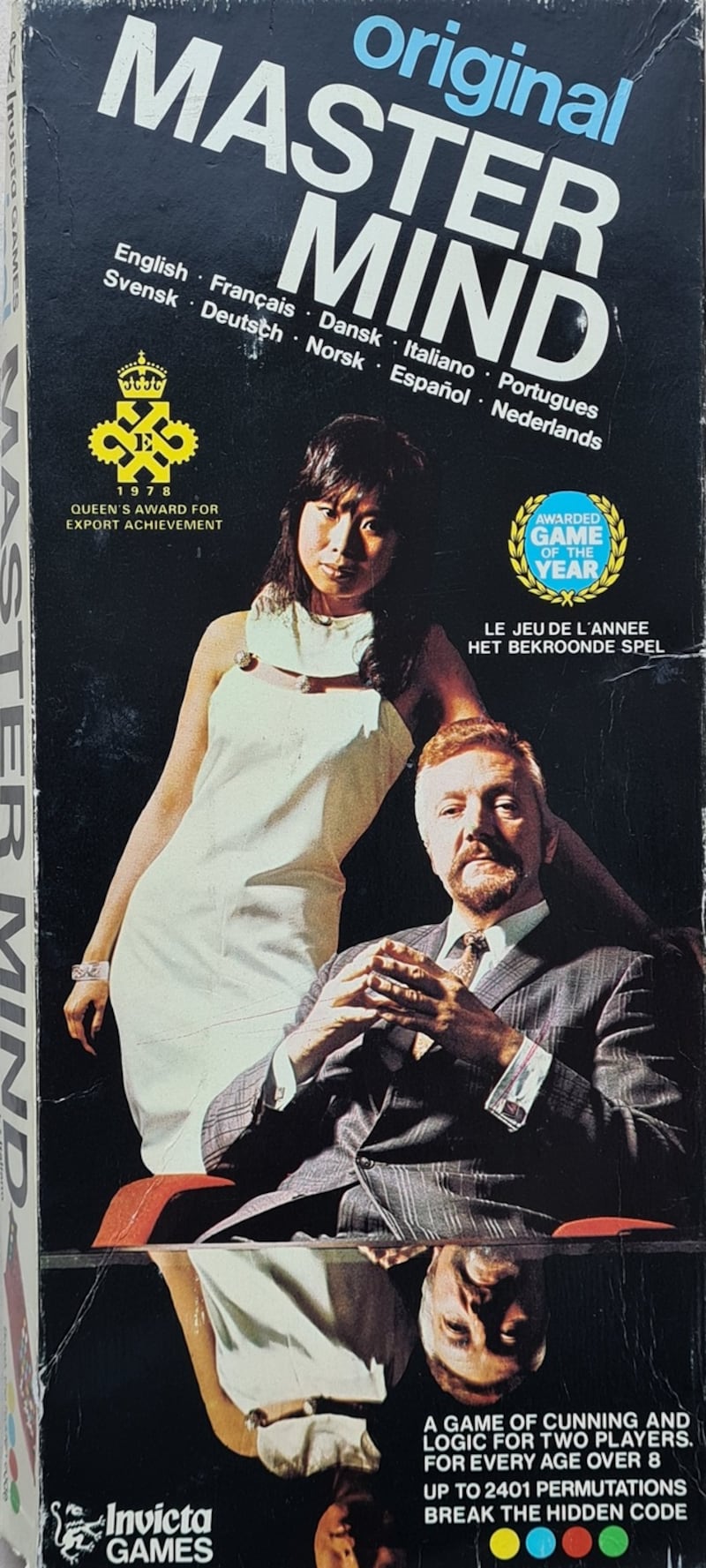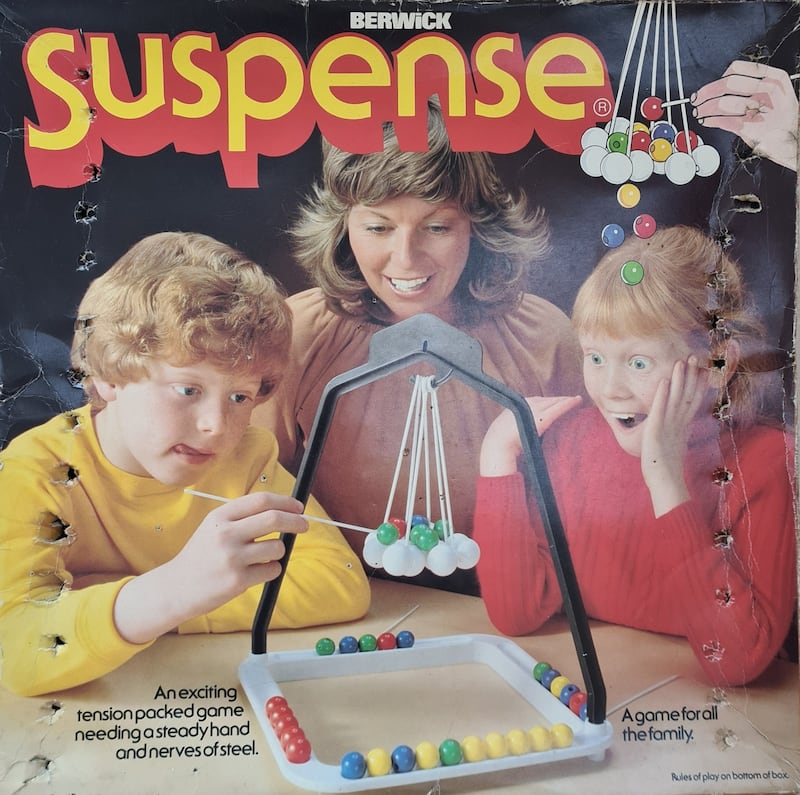Christmas memories from the 1980s include (in no particular order) the opening bars of Wham!’s Last Christmas, Live Aid, a wish made while stirring the Christmas cake and those kitsch foil decorations that are all the rage again now. They also include letters to Santa requesting Tiny Tears and colouring books, Sindys and jigsaws and, it seems, all the other games my siblings and I recently unearthed while clearing my parents’ attic: Downfall, Suspense, Up Against Time and Guess Who?
Alongside the Fancy Felt and Action Man figures, the child-size snooker table and Subbuteo sets, a stack of games brought memories flooding back to the fun and simplicity of our childhoods.


In an interview with Ryan Tubridy a while back, comedian Des Bishop joked that adults of my generation were permanently mindful as kids because we had few distractions and were, essentially, bored out of our heads most of the time. As I pick through the boxes – many of them battered and Sellotaped but containing games in perfect condition – I think of how, undistracted by mobile phones and handheld devices, the simplest of games could thrill and excite us as kids.
I doubt my own sons would get the same adrenaline rush from Up Against Time which enthused: “Match ‘em and stack ‘em high . . . time won’t wait . . . so drop the gate . . . before it’s too late.” What Fortnite-playing 10-year-old would get a buzz out of this 1983 game in which a metal ball trundles laboriously down a plastic ramp while the player feverishly stacks small plastic barrels on top of each other in a bid to beat the clock?
The dopamine hit of Up Against Time could surely only be equalled by Berwick’s Suspense – an “exciting tension-packed game needing a steady hand and nerves of steel” in which players (pictured with tongues protruding deep in concentration) place multicoloured plastic balls on a bed of more swinging balls suspended from above.
Unless, that is, Christmas morning brought Frustration – the “fast and furious pop-o-matic” game by Peter Pan Playthings with its enticing “press it and see” hole in the box. This evergreen toy (which I recently played with my two small nieces) is no longer simply “pop-o-matic” however, it’s now “the slam-tastic chasing game that drives you mad”.
While some of the games we played with as children have fallen out of favour, it’s surprising to see how many of them are still well-loved today despite their sophisticated electronic competition. Game of Life, Cluedo and Connect 4 still feature on letters to Santa, though the cast of Guess Who? characters has undoubtedly become more diverse, and one doubts “The Fat Lady” or “La Grosse Dame” of Waddington’s bilingual Fun Fair game would make an appearance today.

One game stands out among the others, however – an award-winner with a distinctly more diverse outlook for its time: Original Master Mind, which featured on the box a mysterious Asian woman in a white dress and a red-haired man (amateur models Cecilia Fung and Bill Woodward). When I was a child I thought this woman was the coolest, most sophisticated person I had ever seen and a quick vox pop among friends confirms I wasn’t the only one. Who didn’t have a (girl) crush on the Master Mind model?
The strategy game, based on Bulls and Cows, was invented by Mordecai Meirowitz in 1970, and developed by Invicta Plastics in Leicester, UK. Now called Mastermind, it is the most inclusive game in our childhood collection, with instructions in multiple languages, directions of how it can be played by “people with hearing or speech difficulties” as “no oral communication is required between players” and of the availability of a braille version that “enables two blind people to play or a blind person to play a sighted person with equal opportunity”.
These yesteryear games say something too about globalisation and the outsourcing of toy manufacturing from Europe to Asia. While most games these days are made in China (except those made in the North Pole of course) our games were made in England, in cities such as Leicester and Leeds, with few exceptions other than Battleship (West Germany) and Fancy Felt (Hong Kong).
All of our MB games, however, including Monopoly and Game of Life were made in Co Waterford. Established in 1977 as the MB Games Factory, global playing card and games manufacturer Cartamundi took over the factory from Hasbro in 1984 and continues to make much-loved games such as Trivial Pursuit right here in Ireland today.


Looking back over these boxes is a journey to simpler times, when hours of fun could be found in a Colourscope set, a Fashion Wheel or the pages of a Bunty annual. My favourite tabletop toy of all though has to have been my Madame Rosa crystal ball which allowed me to “amaze and mystify” my friends and relations one halcyon Christmas long ago.
Complete with a clairvoyant’s headscarf and crystal rings with magnets inside, I could reveal my family’s fortunes through a trick of the light and a deck of cards. And I wonder, if that little girl could really have looked into Christmas Yet to Come, if she would have seen how lucky she was to have had a childhood straight from the days of Christmas past.









